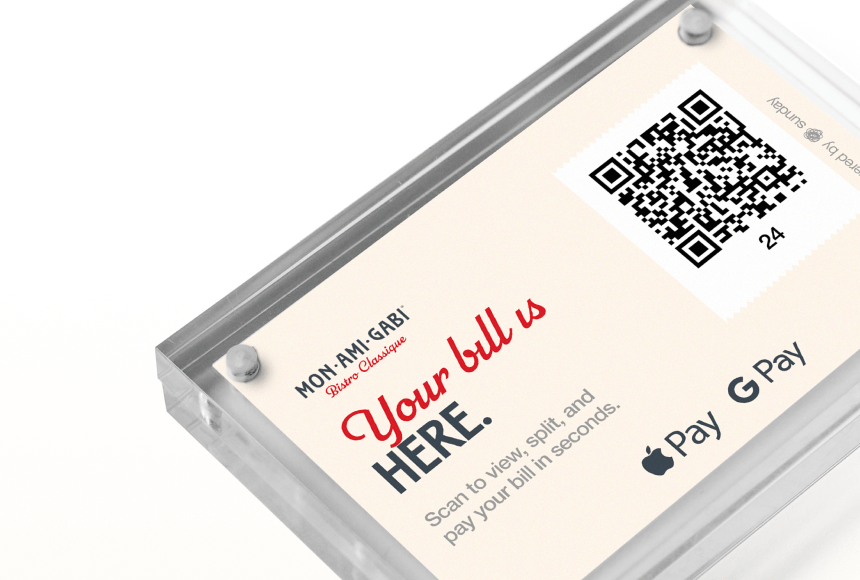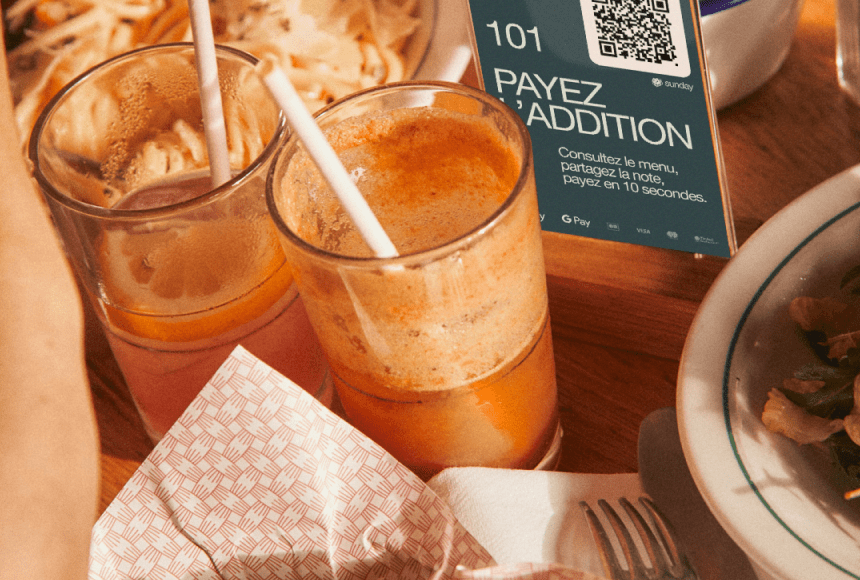
Why the Shift to Cashless Gratitude Matters for Restaurants Today
Introduction: A New Era of Tipping
Restaurants thrive on precision and timing. Just like a perfectly seared steak needs the right combination of heat and seasoning, every detail in your business must be carefully chosen to enhance your guests’ experience. One of the most debated details for restaurant owners is the landscape of tipping—especially as we look ahead to 2025. Will diners embrace digital tips through smartphones and QR codes, or will the tradition of slipping folded bills into a tip jar remain compelling?
While less than a decade ago, cash tips were nearly universal, the rise of mobile payment solutions and digital point-of-sale (POS) systems has opened up new realms of convenience. In the United States alone, the Federal Reserve has noted a steady decline in cash usage since the mid-2010s (source). This seismic shift has consequences not only for how customers pay but also for how they say “thank you” to their servers, bartenders, and other restaurant staff.
In this article, we’ll explore what’s driving the shift toward digital tipping, examine statistics on diner habits, and share strategic insights for staying competitive in the fast-evolving world of restaurant payments. Our goal is to keep you—restaurant owners—one step ahead of the curve, providing clarity on what digital tips vs. cash could look like for you in 2025.
1. How Tipping Culture Has Evolved
Tipping has long been a cornerstone of the US dining experience. Dishes may vary regionally, but the tip is a staple. In our quest to maintain excellent service, tips serve as an important feedback mechanism and financial reward for staff. That said, the culture has seen a transformation in the past several years, driven by:
- Mobile Payments: Quick, cashless payments at the table have made it easier to leave a tip with just a tap or click.
- Rising Awareness: Consumers are more conscious of service quality and labor dynamics, leading them to tip more frequently—even for takeout and delivery.
- COVID-19 Acceleration: Efforts to reduce contact via physical bills and coins skyrocketed, turning digital tipping into a hygienic and convenient option.
- The “No-Tip” Movement: Although still small-scale, the conversation about fair wages for restaurant employees has prompted some establishments to include service fees rather than rely on tips. However, in most places, tips remain a customary part of the dining experience.
What’s incredible is how quickly digital payments have grown in acceptance. We’re now reaching a point where paying with a credit card or a smartphone is not only the norm but often the preference. This shift is impacting tipping patterns, pushing restaurants to adopt new tools—like QR code scanning for bills and integrated tipping solutions—to meet consumer demand.
2. Cash vs. Digital: What Diners are Choosing in 2025
Based on current trends, the year 2025 will likely see a tipping culture where cash still exists but is no longer the default. The National Restaurant Association’s research suggests nearly 8 in 10 consumers prefer a contactless or mobile payment method in restaurants (source). When the payment goes digital, the tip often follows.
There are several reasons for this shift:
- Convenience: Digital tipping is as easy as selecting a suggested tip amount or typing it directly into a mobile device or payment terminal.
- Transparency: Digital records are automatic, making it simpler to track how much is being tipped, how tips are distributed, and whether any service fees apply.
- Speed: When guests pay with a QR code or mobile wallet, there’s no waiting for change. A quick scan, a few taps, and done.
- Data and Analytics: Restaurants can see patterns in tipping behavior—recognizing peak times, top servers, and how promotions or menu changes affect tips.
This doesn’t spell doom for cash. Some diners will still pay and tip in physical currency. They may find satisfaction in the tangible expression of gratitude, or they might be from an older demographic more accustomed to bills and coins. But the direction is clear: restaurants would be wise to adopt flexible payment and tipping solutions that align with modern consumer behavior.
3. The Benefits of Going Digital
When digital payments began to grow, many owners feared the unknown—concerns about transaction fees, cybersecurity, and staff acceptance. Yet, as the dust settles, the advantages of digital tipping have become more visible than ever.
A. Financial Transparency
Digital tips provide a clear record. Instead of staff collecting crumpled bills, restaurants can precisely see who earned what. This transparency eases wage distribution and fosters trust among your teams. In bigger establishments with a large team, efficient tracking can reduce employee disputes and simplify the end-of-day balancing.
B. Faster Table Turnover
One of the most common perks of digital solutions, including apps like sunday, is the speed of each transaction. If you’ve ever felt the pinch of a busy rush—juggling multiple groups who won’t stop pouring in—taking even a few minutes off each transaction can make a big difference. Digital tipping solutions cut out the need to wait for a check to be delivered, a card to be run, and a signature to be made. These minutes add up—and satisfied diners appreciate the streamlined process.
C. Enhanced Guest Experience
Ever watch a chef whip up a dish tableside? It’s memorable because it immerses guests in a frictionless, personalized experience. Digital payments can do something similar for tipping: the moment to tip is integrated seamlessly into the final check process. There’s no rummaging through purses for small change or waiting for the server to bring a terminal. Guests feel catered to, and you showcase your restaurant’s forward-thinking hospitality.
D. Boost in Tipping Amounts
Interestingly, prompted tipping amounts (like 15%, 20%, or 25%) on a touchscreen often encourage higher tips than a blank line on a paper receipt. According to a study by Square (source), when customers are given suggested tipping amounts, they tend to leave higher gratuities overall. This helps boost staff morale and retention, which is vital in an industry grappling with labor shortages.
4. Overcoming the Concerns of Digital Tipping
For many restaurant owners, switching to a digital tipping platform can feel like learning a new recipe with unusual ingredients. Questions arise: Will customers adapt? How will staff handle the change? What about the fees? Addressing these concerns head-on leads to smooth implementation.
A. Transaction Fees
One question we hear often is whether digital tips incur additional fees. Generally, it depends on the payment processor and your agreement. Some owners may pass along small surcharges to the customer; others absorb it as a cost of doing business. Either way, clarity is paramount. Clearly stating, “A small processing fee applies to all digital gratuities” can avert confusion and disappointment later.
B. Staff Education
Your servers, bartenders, and support team are the heart of your establishment. You need to ensure they understand how digital tipping works and feel assured that tips will be shared fairly. This might require a tutorial on using the POS, plus transparency in how tips are split. Some restaurants run staff training sessions to practice ephemeral scenarios—like what to do if a guest wants to tip above the pre-calculated options.
C. Customer Adoption
While many diners are comfortable with technology, some prefer the traditional route. A balanced solution is to allow both physical tips and digital tips, at least initially. Over time, as more people become accustomed to scanning a QR code or using their mobile wallet, it may be feasible to phase out certain cash-based options if you deem it beneficial. But forcing a “tech only” approach too quickly might alienate a segment of your customer base.
5. Structuring Your Digital Tipping Platform
I like to compare designing a digital tipping system to crafting a menu. Each part has to flow logically, and you must clearly communicate the key information. If you plan it thoughtfully, you’re more likely to have a favorable outcome.
Simple Interfaces
The fewer steps guests have to navigate, the better. Display the tip options on the same screen where they settle their final bill. Provide customers with suggested amounts or percentages, plus a field for custom entries. The on-screen visuals should be straightforward—your restaurant’s branding can appear, but the tipping steps must be crystal clear.
Flexible Payments
One day, it’s a family that wants to split the tip among three credit cards. Another day, it’s a college student who forgot their wallet but has a smartphone at the ready. Embrace the diversity of payment methods by offering multiple ways to tip: credit and debit cards, mobile wallets, QR codes, and even gift cards. The more flexible you can be, the more welcoming your restaurant feels.
Integration With Your Existing POS
Nobody wants to juggle two or three separate systems. Ideally, your digital tipping module should integrate seamlessly with your existing POS. That way, when a customer pays and tips through a smartphone or payment terminal, the details are automatically recorded and are available at the end-of-day reconciliation.
With solutions like sunday, diners scan a QR code on the table and can view the menu, order items, and pay directly from their device. They can then easily leave a tip along with their payment, and everything is integrated into your restaurant’s digital format. This eliminates confusion and shortens the order-to-payment journey.
6. Real-World Example: The Daily Crisp
To visualize how digital tipping can transform a restaurant, consider a fictional neighborhood eatery, The Daily Crisp. The owners were facing slow table turnovers and inconsistent tipping. Many customers left no tip when paying with credit cards, claiming they didn’t realize it was an option.
After implementing a QR code-based payment solution with suggestions of 18%, 20%, or 25%, The Daily Crisp discovered that:
- Tips increased by 20% on average.
- Customer feedback improved, noting faster checkout satisfaction.
- Servers felt more motivated, citing a clearer understanding of tip distribution.
This example underscores what a well-designed digital tipping system can do for morale, guest satisfaction, and operational efficiency.
7. Managing Revenue and Budgeting Around Digital Tips
Going digital can have financial ripple effects beyond just collecting tips. As restaurant owners, one of your top priorities is budgeting. You need to know exactly how your revenue streams are performing and how to allocate resources. When most tips are cashless, you can track data with pinpoint accuracy:
- Wage and Tip Breakdown: Clear records reduce the complexity of tip compliance, a hurdle for many restaurants that must adhere to wage and hour regulations.
- Tax Reporting: Automatic tracking decreases the margin for error when reporting tip income to tax authorities. This is especially true in the US, where the IRS has strict guidelines for reporting cash and card tips.
- Scheduling and Staffing: Observing patterns—like how average tips spike on weekends—helps you schedule staff more effectively. High-tip periods might justify more employees on duty, boosting service quality and fueling even more tips.
- Performance Incentives: If digital tipping is part of your restaurant culture, you can devise performance incentives that link staff efforts to tip targets. For instance, a friendly competition to see who can earn the highest average tip percentage without compromising guest satisfaction.
8. The Ethical Side of Digital Tips
No discussion of tipping would be complete without touching on the ethics behind it. The fact that a tip is often perceived as an “optional” gesture leads to debates about fair wages in the restaurant industry. While minimum wages for tipped employees can be lower in some states, digital tipping can help mitigate inequality by making it simpler and more transparent for customers to leave a gratuity.
Still, transparency is crucial. Make it clear if service charges or other fees are baked into the bill. Also, ensure that when diners leave a tip, the staff who served them receive that tip. Nothing undermines staff morale quite like hidden fees or tip skimming. Ethical practices nurture trust not only with your employees but also with the guests who choose to dine with you again and again.
9. Strategically Communicating Digital Tipping To Customers
Good communication is like the seasoning on any dish—it brings out the best flavors. To encourage customer acceptance and satisfaction of your digital tipping system, consider:
- Menu Notes: A small line on your menu or table signs indicating that digital tipping is welcomed can set expectations early.
- Server Guidance: Train your staff to politely mention how to leave a digital tip if a guest asks or appears uncertain. Reinforce that they should never push too hard—pressuring diners is never a good move.
- Clear Checkout: Make sure your payment screens have easy-to-read impetus to tip. If guests can’t figure it out in a second or two, they’re likely to move on.
When customers know exactly what their options are, they are likelier to engage with and welcome new ways of tipping. In the end, transparency rewards everyone involved.
10. Future Innovations in Digital Tipping
We’re looking at a dynamic field that continues to evolve. By 2025, you might see the following trends gain even more traction:
- Biometric Payments: Fingerprint or facial recognition could become commonplace, reducing friction further.
- Wearable Integrations: Smartwatches and other wearables may let customers tap their wrists to pay and tip instantly.
- Cryptocurrency Payments: While not mainstream in the restaurant world yet, certain tech-forward markets might start accepting digital coins and building tips into those transactions.
- Crowdsourced Tips: Peer-to-peer tipping via social media or dedicated micro-transaction platforms, especially for pop-up events or food trucks.
Forward-thinking restaurant owners who adopt flexible, future-proof systems can stay a step ahead. Every year, technological tools make it easier for diners to handle payments quickly and conveniently, which means digital tipping is poised for further growth and innovation.
11. The Path Ahead for Restaurant Owners
Transitioning to digital tipping might feel intimidating at first, but it’s rapidly becoming essential. Think of it like upgrading your kitchen equipment: initially, there’s an investment of money, time, and training, but the long-term payoff is a well-oiled machine that keeps customers happy and staff satisfied.
While offering both cash and digital tip options is wise for now, the momentum is clearly in favor of QR codes, smartphone payments, and integrated tipping solutions. Let your guests choose whichever method they prefer—and be sure to guide them gently in the new realm of digital gratuities.
Loyal customers want to reward good service. By giving them seamless and transparent ways to do so, you build not just your bottom line and server retention, but also deepen the bond between your restaurant and its patrons. A well-considered digital tipping framework is more than a trend: it’s an opportunity to enhance every step of the dining experience, keeping you on the cutting edge of the industry.
FAQ: Digital Tips vs. Cash Tipping
1. Will switching to digital tips affect how much my staff earns?
In many cases, digital tipping can lead to higher overall gratuities. Suggested tip prompts (e.g., 18%, 20%, or 25%) often encourage guests to tip more than they might have with cash. However, it’s important to communicate with your team about any changes and ensure they understand how the new system benefits them.
2. Are digital tips harder to distribute among servers, bartenders, and other team members?
Actually, digital records can simplify tip distribution. Instead of splitting piles of cash, you’ll have electronic logs detailing how many tips each staff member received. This can reduce errors and disputes and allows you to automate part of the process using your POS or integrated restaurant management software.
3. What if some customers only pay in cash and insist on tipping that way?
It’s a best practice to allow both types of payment, especially during the transition period. Some customers still prefer the feeling of handing over a physical tip. Your role is to provide options—keeping both cash and digital tipping channels open so that nobody feels excluded or pressured.
4. Is there a risk of processing fees eating into the tips?
All digital payments are subject to processing fees, but the majority of restaurants find the convenience and increased revenue worth the small percentage. Be upfront with your staff and customers about who bears these fees, whether it’s included in menu pricing or passed along. Transparency reduces confusion.
5. How can I reassure customers about data privacy when using digital tipping?
Work with reputable payment providers that prioritize encryption and secure payment gateways. Let your guests know you take data protection seriously by displaying compliance badges or a brief note about your restaurant’s privacy protocols. This adds a layer of confidence, making customers more comfortable using digital payment and tipping options.
Find out more today
Drop us your details below and we’ll reach out within the next 24h
More tips means a better service.
More tips mean better guest-experience, and better staff-retention.




